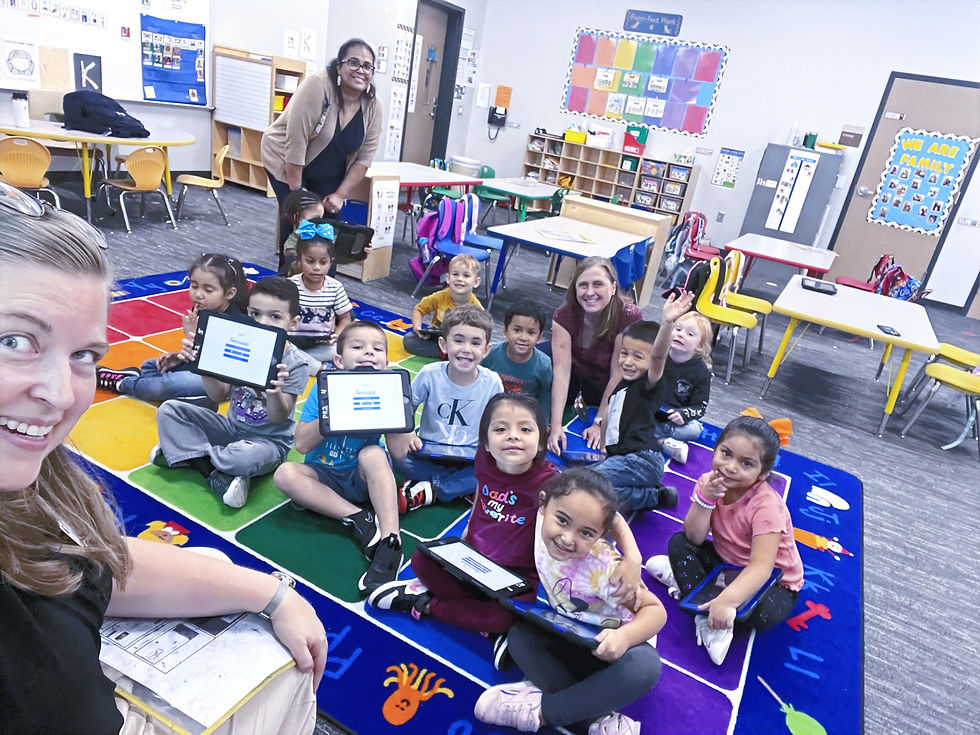Continuously Curious

Professional Development Plan: Enhancing Oral Language Development with Seesaw
Professional development (PD) is a vital aspect of continuous improvement in education. The following plan outlines a comprehensive PD initiative spanning from October 2023 to May 2024, designed to integrate Seesaw digital tools for oral language development in a Pre-K setting. The initiative will follow the principles of effective PD, ensuring sustained support and collaboration among educators.
This comprehensive professional learning outline, grounded in the principles of effective professional development, aims to equip the PK teaching team at Runyan Elementary School with the skills and knowledge needed to integrate Seesaw tools successfully into their curriculum. The collaborative effort, sustained duration, and ongoing support ensure a meaningful and impactful learning experience for educators and, ultimately, for the students they serve.
Five Key Principles of Effective Professional Learning
1. Sustained Duration: The PD program extends from October 2023 to May 2024, allowing for ongoing learning and support.
2. Active Learning: The initiative involves hands-on activities, including lesson modeling, guided practice, and immediate implementation with coaching support.
3. Collaboration: A collaborative approach is emphasized through grade-level team collaboration and the involvement of instructional coaches in daily support.
4. Assessment and Feedback: Ongoing informal assessment, with some formal check ins and feedback cycle. Teachers will assess their progress in January 2024, contributing to the refinement of the PD plan.
5. Alignment with School Goals: The initiative aligns with Bilingual, Instructional Technology, and Early Childhood curriculum outcomes, ensuring relevance to school objectives.
Content Integration
The focus of the PD is on integrating Seesaw digital tools (microphone, video, and photograph) into stations and small group rotations to enhance oral language development for all Pre-K learners using the Preview View Review (PVR) instructional strategy .
Leadership Structure
To ensure effective leadership and coordination, specific components are assigned as follows:
-
District Bilingual Coach: Leads the Preview View Review (PVR) Bilingual Oral Language Development learning.
-
District Instructional Technology Coach: Leads the Seesaw Instructional Technology Integration and Tool learning.
-
District Early Childhood Coach: Leads the alignment of early childhood guidelines (ongoing).
-
Campus Coaches: Campus instructional coaches providing daily support.
-
PK Team Leader: scheduling team time and modeling schedule with input from teaching team

Picture of Instructional Coaches at the end of a successful Labsite Learning in PK, Fall 2023
Schedule
-
PVR and Oral Language Development, Technology Integration (District Bilingual & Instructional Technology Coaches)
-
Bilingual Coach focused on reviewing the Preview View Review Instructional strategy using magnetism as the curricular focus.
-
Instructional Technology Coach followed up showing how to support the same skills on the same topic using Seesaw.
-
-
The participants had a chance to practice delivering portions of a PVR lesson to each other, practice in Seesaw participating as a student, and build in Seesaw using oral language development tools (video and microphone frames) to share with teams
-
Labsite in PK room with others to watch prior
Oct.
-
November 13: PK Seesaw Learning (Instructional Technology)
-
Additional Seesaw tool learning through guided exploration. All members of the team had Chromebooks and were setting up their Seesaw while learning and exploring their Seesaw tools
-
Teacher Preparation for November 30: complete a three item checklist that includes assigning student activities, printing class codes, and being ready to assist students during the guided practice. The teachers have linked directions made with the Tango software to assist with step-by-step pictures.
-
Nov.
-
December 1: Lesson Modeling Schedule (All Coaches)
-
4 classrooms will have Instructional Tech. Coach model a whole group lesson that includes the early childhood Movement Activity Conversation (MAC) expectations and Seesaw lesson.
-
When the students are dismissed to small groups, the classroom teacher will support the small group through the lesson with the assistance of the technology coach, while the other coaches support the other small groups of learners
-
-
December 4: Email follow-up for any additional support (virtual or in person) needed before the upcoming holiday vacation.
Dec.
-
January 2: Email with a Google Form for sharing Student Seesaw work and scheduling observations for Katie to come and give feedback from January 2-February.
-
January 8: 15 minutes of in person team time to review Seesaw Skills data tool.
-
January 15: Teachers sign up for virtual support that fits their schedule for Seesaw Skills or any other questions.
-
January 22: 15 minutes of in person team time to debrief and plan for next actionable steps- (further learning on the tool, modeling, feedback cycles, integration ideas, class/child specific integration solutions, curriculum alignment, assignment “make overs”)
-
Feb-May 2024 TBD based on January 22
Jan.
References
Andrews, T. M., Leonard, M. J., Colgrove, C. A., & Kalinowski, S. T. (2011). Active Learning Not Associated with Student Learning in a Random Sample of College Biology Courses. CBE Life Sciences Education, 10(4), 394–405. http://doi.org/10.1187/cbe.11-07-0061
Duarte, N. (2013). Resonate: Present visual stories that transform audiences. John Wiley & Sons.
Fink, L. D. (2013). Creating significant learning experiences: An integrated approach to designing college courses. Jossey-Bass.
Goodwin, B. (2015). Research Says/Does Teacher Collaboration Promote Teacher Growth? Educational Leadership, 73(4), 82–83. Retrieved from http://www.ascd.org/publications/educational-leadership/dec15/vol73/num04/Does-Teacher-Collaboration-Promote-Teacher-Growth%C2%A2.aspx
Gulamhussein, A. (2013). Teaching the Teachers Effective Professional Development in an Era of High Stakes Accountability. Center for Public Education. Retrieved from http://www.centerforpubliceducation.org/system/files/2013-176_ProfessionalDevelopment.pdf